Pierre Guariche, the design pioneer of the 20th century
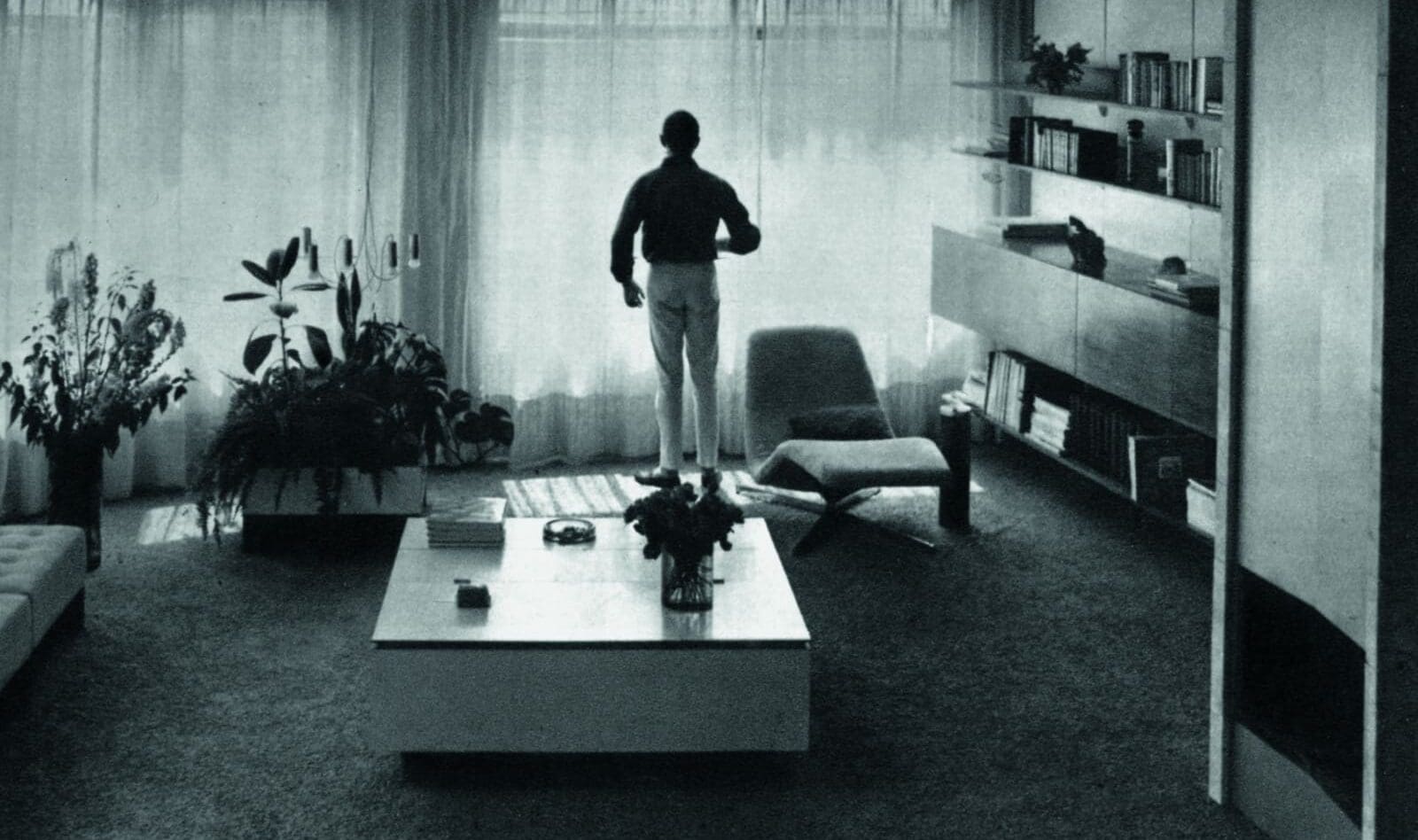
Pierre Guariche (1926-1995) was an important French interior and industrial designer of the 20th century. Known for his innovative and functional furniture and lighting designs, Guariche played a key role in the emergence of the French design scene after the Second World War, the period of mid-century design.
Guariche began his career in the 1950s. He strove to combine aesthetics and comfort in his furniture, often relying on clean lines, geometric shapes and the use of modern materials. His work spans a wide range of designs, including lighting, seating, tables and other interior furnishings.
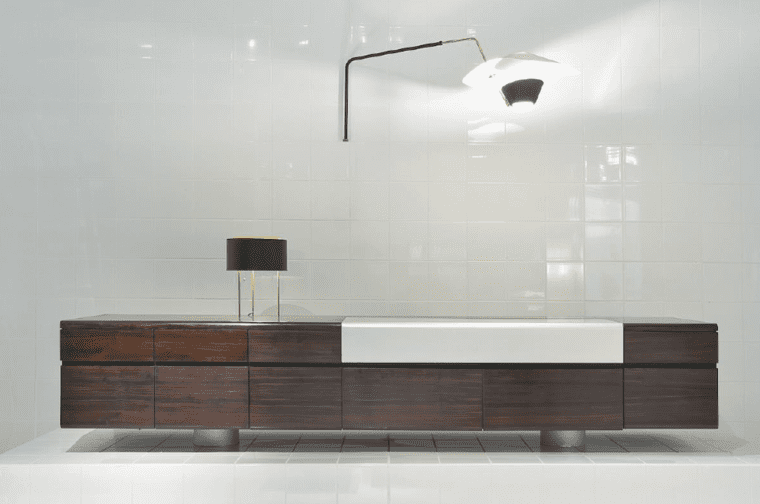
New design principles of mid-century design
His contributions to vintage design are particularly noteworthy, focusing on functionality, elegance and the needs of modern life. The millions of homes that were rebuilt in France after the Second World War changed living conditions in the post-war period. The design profession had to face up to this social challenge, which is why he designed furniture and lighting as an interior designer.
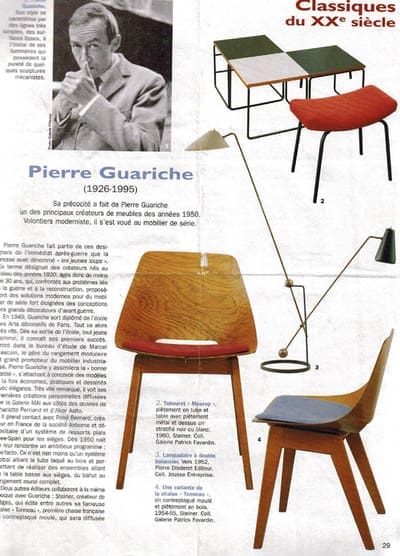
Tasteful lighting and furniture at affordable prices
Pierre Guariche wanted to design affordable, elegant and contemporary furniture and lighting. This is why he became interested in innovative materials and industrial production methods very early on.
The focus is not on the form, but on the effect it creates in the space in which it is placed. In his eyes, the production costs of his future products were more than ever the nerve of the post-war period. From then on, trade fairs and the magazine press offered the opportunity to market them.
Midcentury design icons and innovative distribution methods
He opened his first design studio at the age of 25 in his own flat in Paris. There he created designer lighting and furniture, which were first published by the MAI gallery and later by the companies Airborne, Steiner and Pierre Disderot and have since become design icons.
Trade fairs are the central place for him to publicise his work. His works are exhibited on all of his publishers' stands.
Michel Mortier and Joseph-André Motte, two French designers of the same generation, shared his tireless search for functional, aesthetic and economical furniture and founded ARP (l'Atelier de recherches plastiques) with him in 1954, a collective under which they could sign and dynamise part of their production. In the three years of its existence, the ARP published around 30 of its pieces, took part in numerous trade fairs and competitions and set up several offices and flats.
From furniture and luminaire design to interior design
His interior design projects became more and more numerous and allowed him to fully realise his creativity. His most famous project is probably the La Plagne ski resort at 1960 metres in the French Alps, where he was responsible for the entire interior design of the mountain and valley stations.
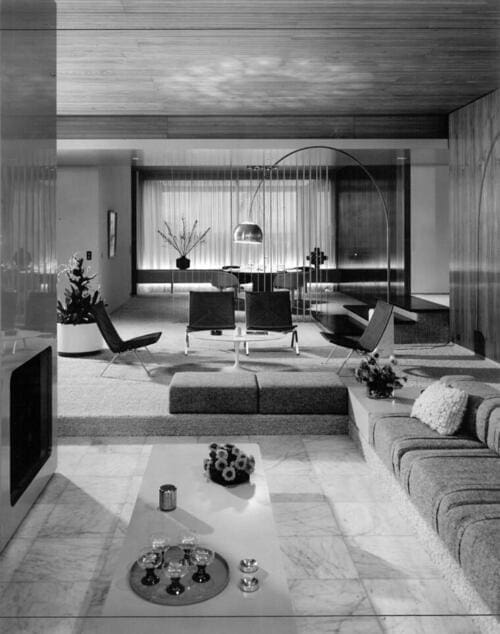
The ski resort of La Plagne and the innovative concept of transformative organisation
The project was launched in 1961. A new ski resort was to counteract the desertification of agriculture in the area and at the same time boost snow tourism.
In 1964, Pierre Guariche joined the team led by architect Michel Bezançon to develop the prototype of the high mountain stations. In order to keep the footprint as small as possible, the concept focused on verticality, but also on horizontal connections between the various buildings and services through a shopping gallery. The interior designer spent twelve years designing the stores, the chapel and the cable car stations, including the gondolas and masts. Some of the thousands of apartments he is designing there will be used as hotel residences.
In La Plagne, Pierre Guariche designed a new, innovative concept for hotel accommodation, the "transformative arrangement". It was created long before Charlotte Perriand used the same principle in the planning of the alpine ski resort of Les Arcs.
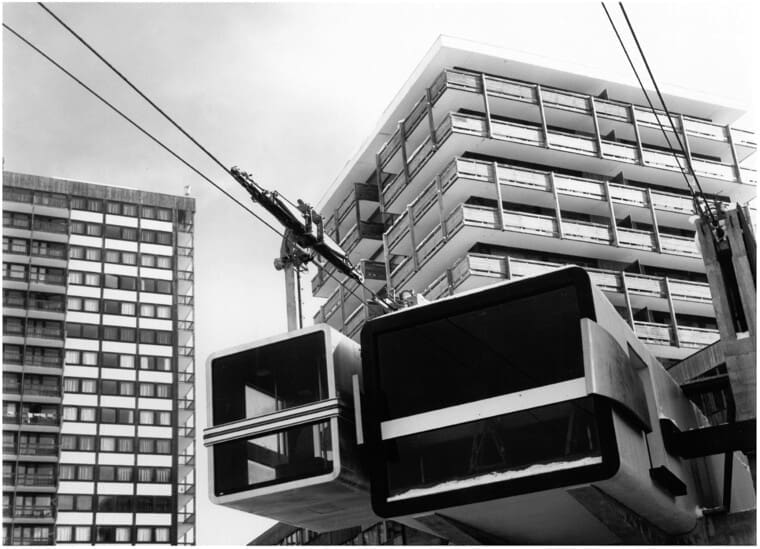
A new generation of mid-century designers
During the 1960s, Pierre Guariche increasingly developed built-in furniture in his interior design projects for leisure residences. From the 1970s onwards, he used furniture designed by other designers such as Eero Saarinen, Warren Platner, Harry Bertoia, Pierre Paulin and Roger Tallon in his interiors.
Guariche's influence also extended to education, as he worked as a teacher at various design schools and thus moulded the next generation of designers.
Innovative strength and timeless elegance
Together with like-minded designers, architects and entrepreneurs, he made a significant contribution to the new definition of contemporary style and design in the spirit of optimism of the post-war period. In the beginning, he actually only wanted to design "tasteful furniture in series at the price of tasteless furniture"…
Overall, Pierre Guariche left behind a significant legacy in the field of French design, which is still valued today for its innovative strength and timeless elegance.


